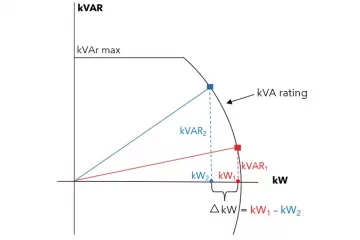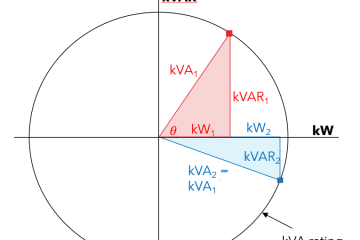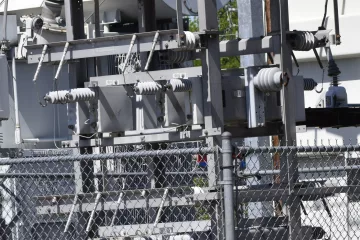This is the fifth of five articles in the series “Reactive Power in Utility-Scale Solar PV Applications.”
As mentioned in Blog #2 of this series, DERs (Distributed Energy Resources) impact voltage on feeder, no matter how small they are. For small DER penetration, the voltage impacts are relatively small. For higher penetrations and utility-scale DER, the potential for adverse voltage impacts becomes greater. The capability of DER to help control these voltage changes on the power system becomes important.
In this post, we’ll look at four reactive power control modes that can be selected in modern smart inverters to control inverter reactive power production (or absorption) and subsequently voltage where the plant connect to the system.
- Constant power factor mode
- Voltage-reactive power (“Volt-VAr”) mode
- Active power-reactive power (“Watt-VAr”) mode
- Constant reactive power mode
It is appropriate to note that the distribution or transmission operator of the system to which the DER is connected will specify which control mode, if any, and the settings of that control mode.
1. Constant power factor mode
In constant power factor mode, the inverter changes its reactive power injection (or absorption) in proportion to the inverter’s real power such that power factor remains constant. At higher real power production the inverter produces (or absorbs) higher reactive power, with the converse at lower real power production.
The power factor setting of many smart inverters is adjustable from + 0.8 to 1.0. According to IEEE 1547-2018, constant power factor mode with 1.0 power factor is the default reactive power control mode.
2. Voltage-reactive power (“Volt-VAr”) mode
In this mode, the solar PV system adjusts its reactive power injection (or absorption) based on the actual voltage, if the actual voltage is outside of a specified dead band.
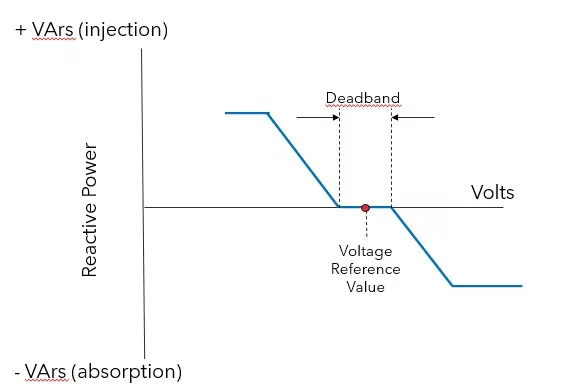
Basically, if the voltage is too high and outside of the dead band, the inverter absorbs reactive power. This has the impact of reducing the voltage.
If the voltage is too low and outside of the dead band the inverter injects reactive power, like a shunt capacitor on the system. This has the impact of raising the voltage.
This capability is quite effective, but engineering studies are usually performed by the power system operator to ensure that Volt-VAr control does not interfere with other voltage control equipment on the system.
3. Active power-reactive power (“Watt-VAr”) mode
For the characteristic in the figure, during relatively high levels of real power output, the inverter will absorb reactive power, which has a downward influence on the voltage.
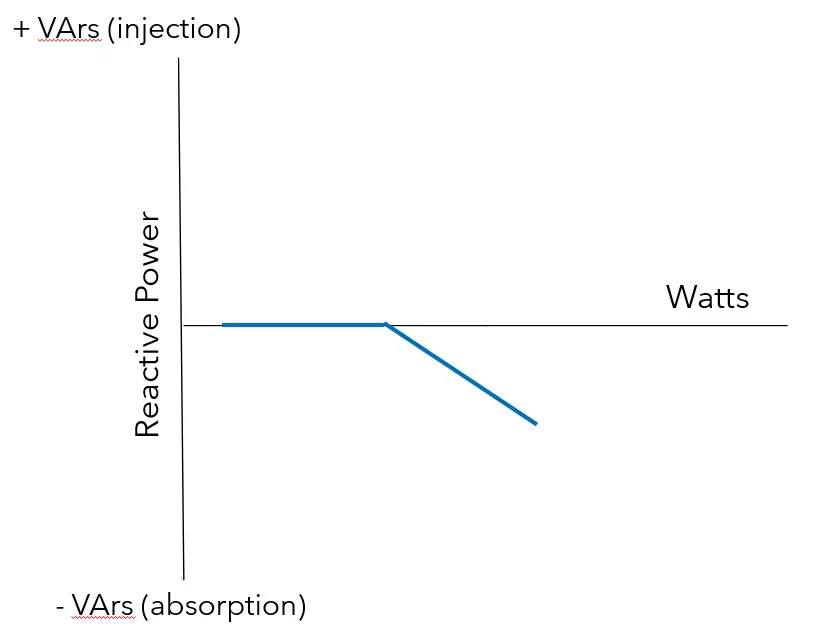
During relatively low levels of real power output, the inverter operates at zero reactive power (or power factor equal to 1.0), and the power system must neither supply or absorb reactive power from the inverter.
4. Constant reactive power mode
In this mode, the inverter either injects or absorbs a constant amount of reactive power, independent of real power output, depending upon its setting. The inverter appears to be either a shunt capacitor (injection) or a shunt inductor (absorption). The inverter therefore appears to the power system as the static capacitor or inductor equipment which engineers are familiar with.
Summary
There are many other details involved in specifying these reactive power control modes. These may include default values and ranges of allowable settings, as specified by the power system operator.
It is very important that utility-scale solar PV owners/operators/engineers are aware of the requirements that the power system operator has for reactive power control before enabling it, as voltage control can have significant impact on power system operation.
Tim Taylor is the founder of Electric Distribution Academy, and all his courses are hosted exclusively on HeatSpring. Tim is the instructor for several courses focused on utility distribution, including “Interconnection of Utility-Scale Solar PV to Distribution” and “Understanding IEEE 1547-2018 – Interconnection Standard for DER on Distribution.
